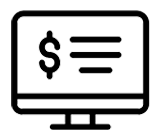So, this is Christmas. And what have you done?
Well, if you’re like many other Amazon FBA business owners, you’ve run yourself ragged for a month. Or, more like, you’ve not stopped since COVID hit.
Some will look back on their income and say it’s all been worth it. Fair play; some owners love being constantly connected to their customers.
Others — up to as many as 80%, according to one report — don’t own a pair of those rose-tinted glasses. Checking their store over Christmas Day dinner? No thank you.
But, what options do you have when you’ve put so much into building an Amazon store, but now want rid? It’s not like you can sell your Amazon FBA business as a going concern, is it?
Actually, you can. And it’s easier and perhaps more profitable than you might think.
Why now might be the time to sell your Amazon private label business
Prior to 2020, selling Amazon businesses appealed to a tiny market. Hidden behind private equity dealers, few merchants even knew it was an option. That’s changed, and some.
Amazon aggregators have forcibly moved buying FBA businesses into the ecommerce mainstream. By doing so, they’ve increased the competition.
This new visibility has tempted investors, who’ve since funded Amazon aggregators to the tune of billions. Now, across the globe, there are getting on for 100 active such businesses.
At the beginning of the curve
Experts, based on history, suggest that there’s a natural arc for this type of investment. They’re probably right. But, right now, it’s early days. We’re still at the beginning of that forecast trajectory.
The expectation, therefore, is for the number of aggregators to double in 2022. So, good news; there are no signs of slowing just yet.
How the price of Amazon FBA businesses has grown
Marketplace Pulse has researched the market now that there’s enough data to make data meaningful. If you sold your Amazon business in the early days, you might want to look away now.
Two years ago, you’d have typically realised 2.5-to-3 times your Seller’s Discretionary Earnings (SDE) in a buy-out. So, if you earned $500k a year, you could expect an offer between $1.25-$1.5m.
Back then, your FBA earnings were pretty much the sole yardstick by which buyers valued your business. Sundries like add-backs and expenses did contribute, but marginally.
Digging deeper into your proposition
Today, buyers look at many other factors about your business before making an offer. In an extension of a basic SWOT analysis, they will take into account:
- the type of merchandise you sell;
- your total profit;
- trend: the trajectory that both your profit and product categories are on;
- opportunities to add to your brand and grow your position;
- benefits of adding your brand to others to make a portfolio to attract higher investment;
- how much competition you have, and your position against them.
There are more factors investors will look at. But, if you tick enough boxes, you could receive 4-to-8 times your SDE. The same business that sold for $1.25-$1.5m two years ago could, potentially, be worth $2-$4m today.
Make 2022 about you
Only you know how you feel about your Amazon business today. Are you looking forward to 2022, or does it fill you with dread?
There’s no harm in finding out what your FBA business might be worth. Do you value your time or the money? It’s a pretty straightforward choice.
We know that half of the big active aggregators have just finished their own rounds of funding. They have money to spend. Their investors have even deeper pockets.
If you fancy some of that action, you’d do a lot worse than starting with our explanatory video. In the meantime, here’s wishing you a very happy holiday and prosperous new year!
Further reading:
This website was created by ex-Amazon sellers, Martin Smith and Richard Turnbull.
To learn about our story, our private label FBA brands, and our first-hand experience selling to Amazon aggregators, click here.
You may also wish to check out our 2022 Definitive Guide to Amazon Aggregators.
Written for FBA sellers, this simple, easy to follow document takes less than 5 minutes to read and represents the culmination of over 100 hours of research into the Amazon aggregator space. To access the guide today, click this link.









